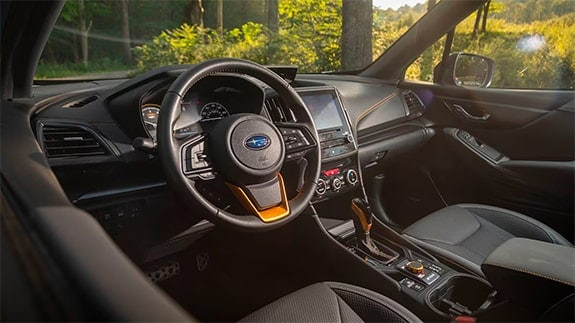Cost to charge
You might occasionally be able to charge for free at a public station, but that's not something you can count on. Most electric-car owners charge at home, and so you'll need to know what it costs to charge there.
The cost of electricity is much more stable than the cost of gasoline, but it varies tremendously in the U.S. The residential average per kilowatt-hour currently ranges from 9.8 cents in Alabama to 35.6 cents in Hawaii. The national average is a little less than 14 cents, which is about 1 cent more than it was a year ago. In California, which leads the nation in electric car sales, the residential average cost per kilowatt hour is 23.2 cents. To find your state's average, check this state-by-state list of the average cost per kilowatt-hour.
Your state's average is just that, however. What you pay is determined by your utility company and the plan you use. Utility companies typically have two types of rate plans. In level-of-use plans, electricity cost rises with your consumption. A kilowatt at month's end is likely to cost more than one used on the first day.
With time-of-use plans, you pay by the time of day you're using electricity. Electricity that you use at peak hours costs the most. Some plans divide the day into peak and off-peak periods. Some also have mid-peak slots.
To show how these plans work, we'll use the example of Southern California Edison, based in the state where most electric cars are sold. Southern California Edison has a triple-tier, consumption-based basic monthly plan for residential users that starts at 28 cents per kWh and rises to 46 cents when a person has gone over 400% of his or her baseline energy allocation. The utility also has a special residential time-of-use plan geared toward people with plug-in vehicles. It charges the most for consumption between the hours of 4 p.m. to 9 p.m. With this plan, the customer would pay 22 cents per kWh during off-peak times and up to 54 cents per kWh in the peak summer months.
Some utilities may charge separately for household use and EV charging, with lower rates for cars. But this may require the installation of a separate meter for the home EV charging station. That can cost well over $1,000.
Assuming we used the Southern California Edison time-of-use Prime rate plan, a 2022 Ford Mustang Mach-E RWD with the extended battery, which is rated at 35 kWh/100 miles, would cost as little as $3.85 for 50 miles' worth of power if home charging started at 11 p.m. Or it could cost nearly three times as much, $9.45, if the car charged during peak hours.
On the tiered rate plan, that charging session would run approximately $4.90 for tier one. But if you went past your allotted power, you'd pay about $6.48 for tier-two consumption and $8.05 for tier 3.
If you're going to be a heavy user of 240-volt public charging stations, pay attention to the speed of the onboard charger for any EV you're considering. How much you'll pay at a public charging station depends on it.
This is because charge stations often make you pay by the hour. So a car with a slow onboard charger will cost more to fill than one with a fast one. The differences can be huge: A base 2017 Nissan Leaf with the then-standard 3.3-kW onboard charger takes twice as long to charge, and twice as much electricity to fill, than a 2018 or later Nissan Leaf with the 6.6-kW onboard charger. Thankfully, many EVs now come standard with a 6.6-kW or a 7.2-kW charger.
Costs for a home charging setup
Besides understanding what it will cost to power an EV, it's also important to know the cost of a key piece of at-home technology: the electric vehicle supply equipment (EVSE), along with the cost of its installation. Another potential cost is a residential solar power system, which a growing number of people are considering, either for vehicle charging alone or for powering the car plus the household. Let's break down what these things cost.
The electric vehicle supply equipment: $200-$1,000+
Plug-in vehicles today typically come with the ability to charge at home on standard household current, 120 volts, which is called Level 1 charging. They also can charge on faster 240-volt circuits, called Level 2 charging.
If the vehicle has a small battery, under 10 kWh, you can often make do with the Level 1 charging system that comes with the vehicle. For plug-in cars with larger batteries, Level 2 is your best bet for overnight charging and quick top-ups.
Most automakers with plug-in vehicles in their lineups have a preferred charger provider, but there are dozens of companies selling EVSEs. A search online will help you find the features, power output and pricing that best suit your needs. Just search for "EVSE" or "EV home chargers." Prices for quality Level 2 home systems can range from just under $200 to more than $1,000 before installation.
There are faster Level 3 chargers, but they require a 440-volt DC power supply and are not meant for home use. You'll find these at Tesla Supercharger locations or other independent charging stations.
Cost of installation: $800-$1,300
Installation costs for EVSEs vary by region, depending on such factors as local labor rates, materials used, and government permit costs and requirements.
The biggest variable is permit costs, said Ken Sapp, SVP of business development for Qmerit, a Southern California company specializing in connecting homeowners with qualified EVSE installers throughout the U.S.
Nationally, Sapp said, average costs range from $800 to $1,300 for a home EVSE installation with a short and uncomplicated 10-foot wiring running from the electrical service box to the charging station.
The costliest region is the Western U.S., where installation can run from $950 to $1,300. It's least expensive in the Central U.S. states, at $800 to $1,100. Costs in the Southeast states can range from $850 to $1,150, while costs run from $900 to $1,200 in the Northeast.
The costs of a solar system: $7,000 and up
Unless you'll be charging electric cars for many years to come, it can be difficult to make an economic case for installing a solar system just to serve your EV.
In the Los Angeles area, a 1-kilowatt solar system produces an average of 4 kWh of power per day. A base Tesla Model 3, which is EPA-rated at 29 kWh/100 miles and is one of the more efficient EVs available, would need at least a 3.1-kW system to get about 50 miles of range per daily charge. Such a system costs roughly $7,000 and doesn't include the cost of a storage battery to hold power for overnight charging. That feature could double the cost.
Solar starts to make more sense if you install a system capable of providing electricity for the household as well as the EV. Upfront costs of owning a solar system outright can be steep. But on average, a properly sized whole-house solar system will pay for itself over about seven years and will last for at least 25 years. Costs are largely dependent on the size of the system, regional labor rates, the quality of the solar panels and power inverter used, and the complexity of the installation.
The national average installed cost of a 10-kW system is $20,498 after applying the 26% federal tax credit, according to EnergySage, a Boston-based service that links homeowners with solar system providers across the country. Depending on your location and energy needs, a considerably cheaper 6-kW system could be adequate. There are a number of solar system financing and leasing programs, although the latter may come with onerous conditions from the leasing company, so be sure to read the fine print. Some utilities also offer incentives.


 by
by 
